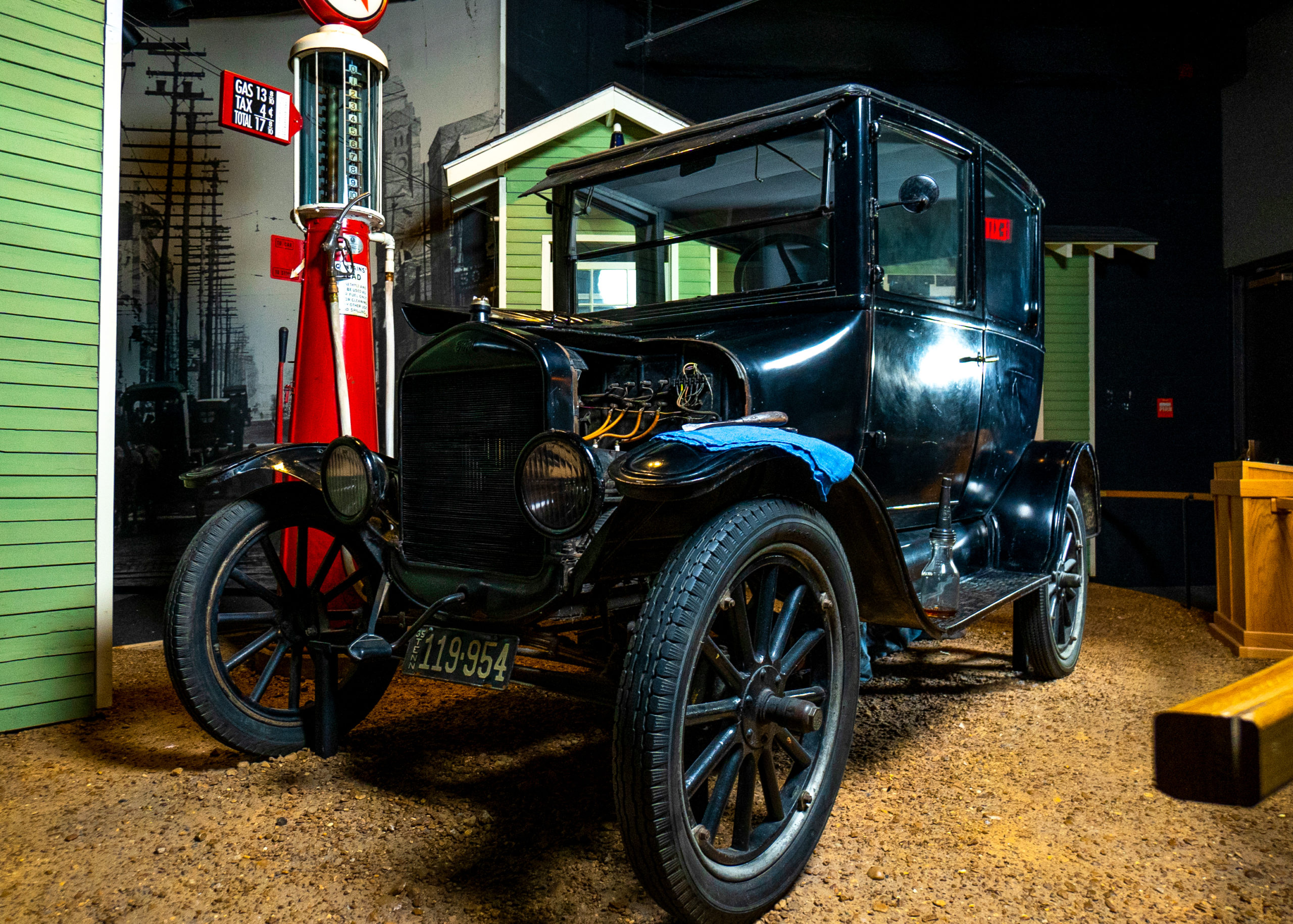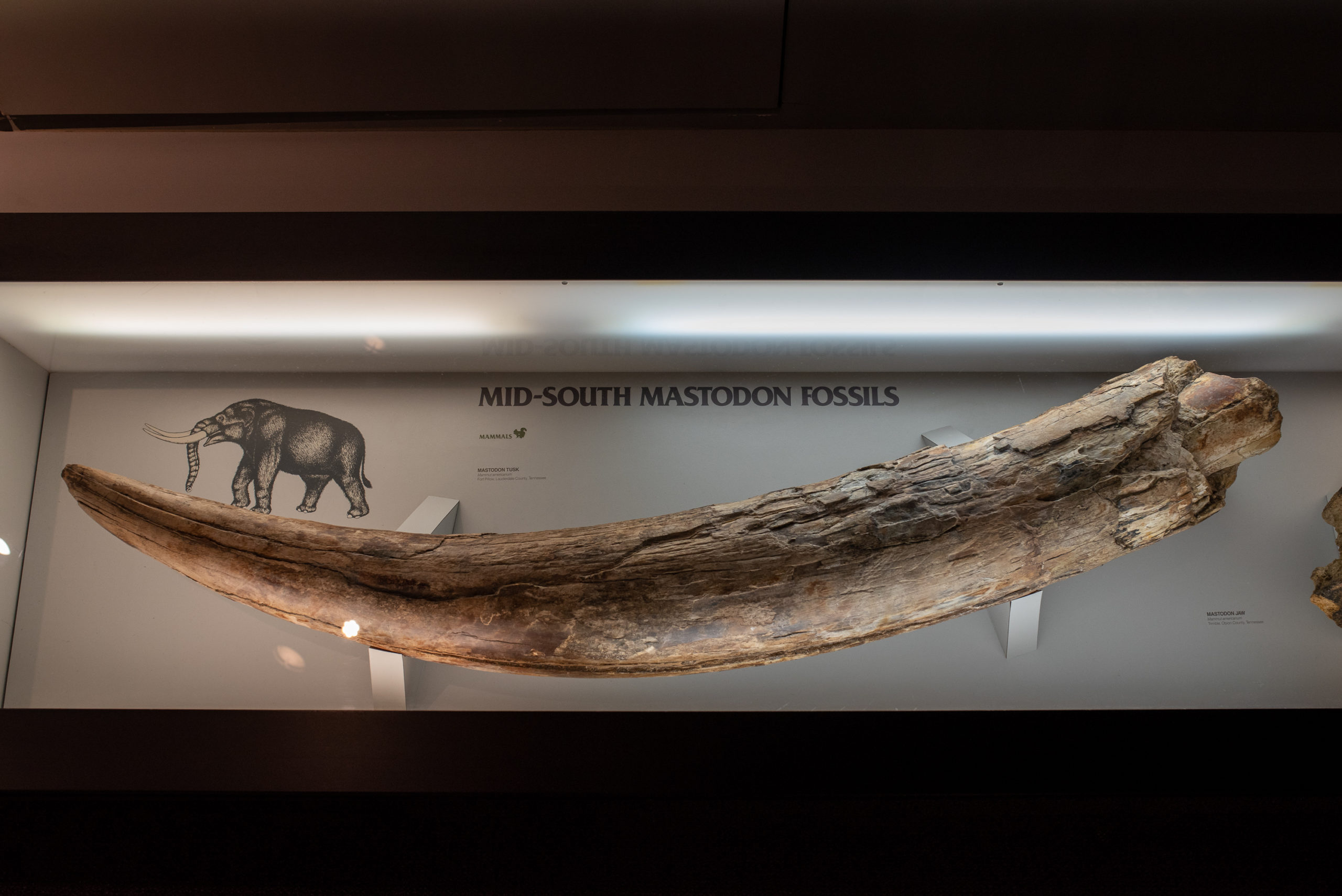
When Mastodons Roamed Memphis
The American mastodon (Mammut americanum) roamed the forests of Memphis and the Mid-South for at least three million years. They enjoyed a steady diet of trees, shrubs, and other foliage in the swampy woodlands of the Mississippi River Valley. Several discoveries of mastodon remains have been made in the Memphis area, two of them by curious kids.
One such discovery was made in 1976 by two boys exploring around Nonconnah Creek. The boys, Mike Baker and Rusty Brown, saw a tusk sticking out of the sand. They showed their find to Mike’s brother Bill, an archaeology student, who contacted MoSH (then Pink Palace Museum). With funding from the Plough Foundation, museum staff members directed a team of archaeologists from Memphis State University in excavating the site. Tests on the mastodon’s remains revealed it was between 23,000 and 17,000 years old. Several intact plant fossils of the same age were also found near the bones. The mastodon remains can be seen today at MoSH in the natural history gallery.
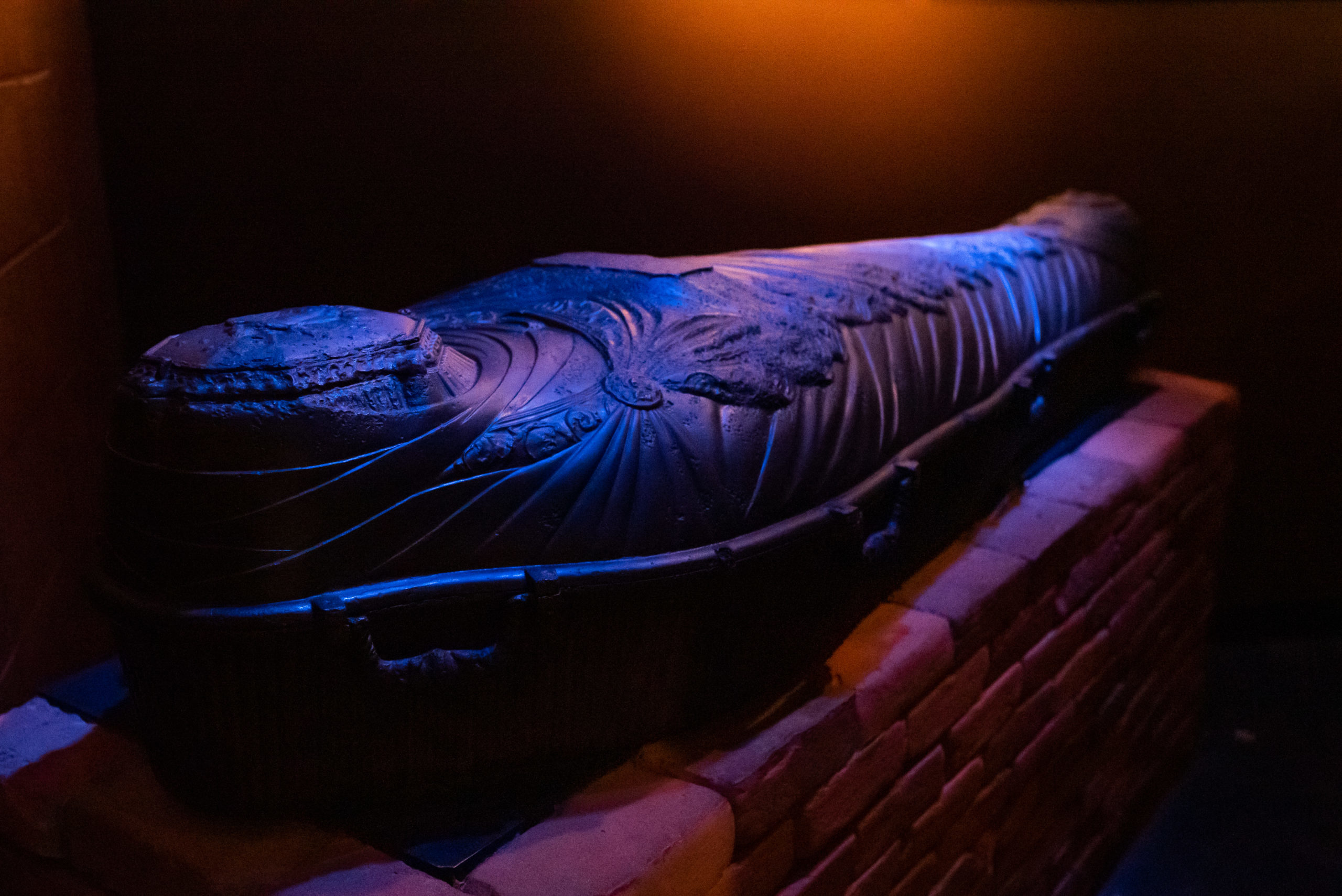
Plowing Along, Then…
There are no human mummies at the Museum, but there is a mummy casket. On April 30, 1970, Stanley Wright drove a tractor-plow over a buried crypt on Kate Bond Road in Bartlett. The plow broke through the crypt’s bricks, exposing a unique cast iron casket. The police, Health Department, and land owner, Kate Bond, decided to remove the coffin because of the high risk for vandalism and transferred it, along with the 2,000 handmade bricks from the crypt, to the Museum. Museum staff, Health Department officials, members of the Shelby County Historical Commission, and an anthropologist opened the casket on May 18, 1970, to ascertain whose grave had been disturbed. They determined that the body was likely Thomas Harwell, a farmer who had owned the 580-acre Fletcher Creek Farm that encompassed Kate Bond’s land. Morning Sun Cemetery, located three miles from Harwell’s original farm, agreed to reinter the body on the condition that the original casket not be used, again for fear of vandalism after all of the publicity surrounding the events. The coffin and the crypt bricks are on display in the Memphis History exhibit in the cultural history galleries.
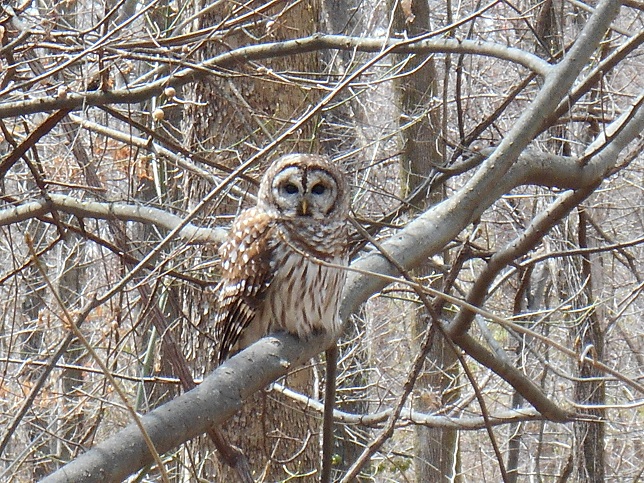
Who Goes There?
“Who cooks for you?” is the distinctive 8-9 note hooting call of barred owls. Barred owls are spotted brown and white with vertical white bars on a white background on their underparts. Their wings and tails are also marked with brown and white. These owls roost in forest trees during the day and hunt small animals, such as rodents, at night. They sit and wait on elevated perches while scanning for prey by sight and sound. Barred owls are easier to hear than to see. They do not migrate or move around very much. In fact, they’re territorial and will chase away intruders. They usually make their nests in natural cavities, high up in a large tree, although they will use stick platform nests abandoned by other animals. They do little to change existing cavities or platform nests. Barred owls are used as an indicator species for old growth forests because their status gives information on the overall condition of the ecosystem. A barred owl has been documented nesting at Lichterman Nature Center in the past, and they can sometimes be heard calling during the day.
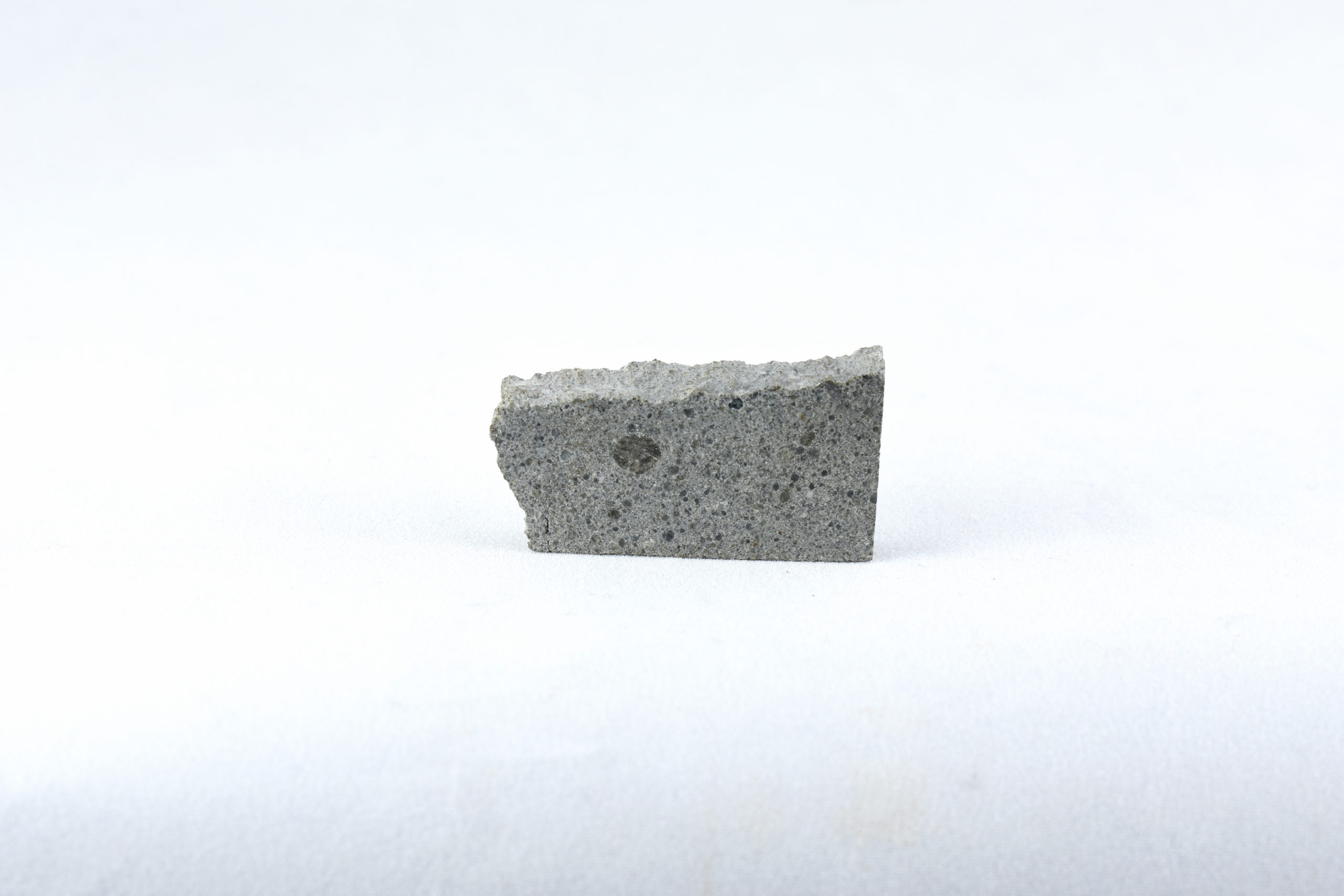
In Coming!
This stony-iron meteorite fell in the Tiris Zemmour region of Mauritania in Northwest Africa. In January 1997, nomads sold an unknown mass of material, potentially broken apart from a large stone, to meteorite collectors near Mhamid, Morocco. Meteorite dealer Edwin Thompson collected six meteorites from the base of the El Hammami Mountains, and identified it as the place where the meteorites likely fell.
This specimen is an H5 meteorite, which means it is an ordinary chondrite. Ordinary chondrites are a class of stony (non-metallic) meteorites that have not been modified either by melting or differentiation of the parent body. They are the most common type of meteorite. Come check out our meteorites and tektites in the geology area of the Museum.
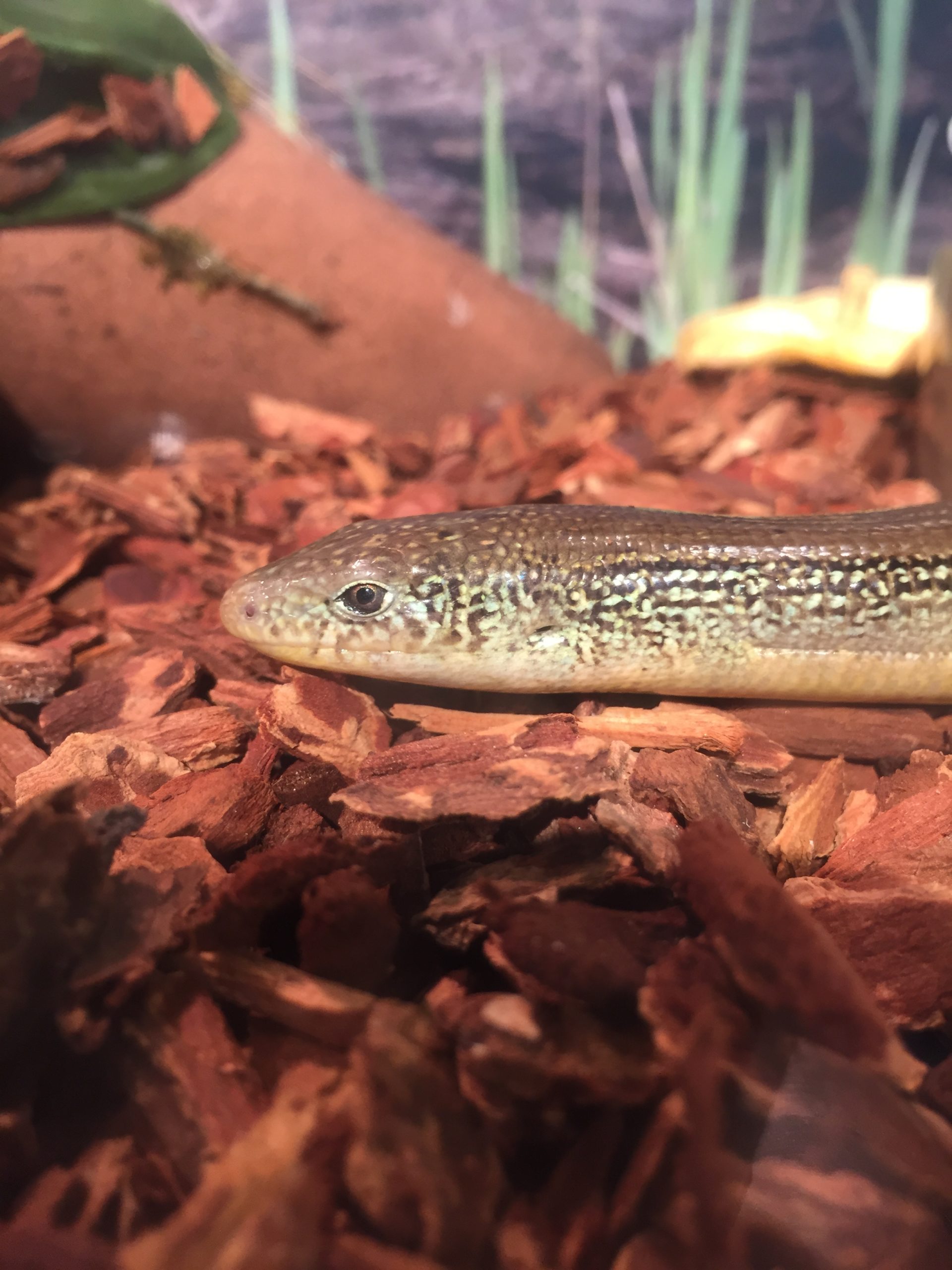
Is That a Snake?
No, it’s a legless lizard! Eastern glass lizards have moveable eyelids, external ear openings, and inflexible jaws. Their tails break off easily, but can regenerate, although the replacement is usually lighter in color than the rest of the body. Eastern glass lizards are burrowers, and typically live in meadows, grasslands, and pine flatwoods in the Southern Coastal Plains. They prey on insects, spiders, bird eggs, and small snakes and lizards. Eastern glass lizards are not native to the Mid-South, but you can see one in the Backyard Wildlife Center at Lichterman Nature Center. You can also examine a legless lizard skeleton in the Bones Exhibit in the natural history gallery at the Museum.

Crossing That Bridge
On July 15, 1916, the Harahan Bridge, the second bridge built in Memphis to cross the Mississippi River, opened for railroad traffic. Originally named the Rock Island Bridge, the steel structure was renamed for Memphis businessman J.T. Harahan, who had been killed in 1912 in a train wreck. For a time after the bridge opened, automobiles were still ferried across the river. In 1917, wooden planks were installed on each side of the bridge and placed atop metal girders. The planks carried single file traffic in each direction. A celebration was planned for September 1917, when the bridge opened to cars, but the celebration was cancelled, because many people felt it was unpatriotic to celebrate while Memphians were fighting in World War I. Bridge guards were employed to patrol the wooden planks 24 hours a day until 1960, when a fire alarm system was installed. The bridge remained a single-lane highway until 1949, when the Memphis & Arkansas Bridge was built. The bridge is now closed to cars, but it is open to pedestrians as the Big River Crossing.

Don’t Forget Your Comet Pills.
Comet Halley (1P/Halley) is expected to make its next appearance on June 27, 2061. So you have plenty of time to get your comet pills. When it passed by in 1910, it sparked some public hysteria over the possible apocalypse. Some fraudsters sold pills promising to protect takers from comet-related side effects. The comet came and went with no mass extinctions, returning again in 1986. This time around the Stasenburgh Planetarium at the Rochester Museum & Science Center sold anti-comet pills with a history lesson printed on the side.
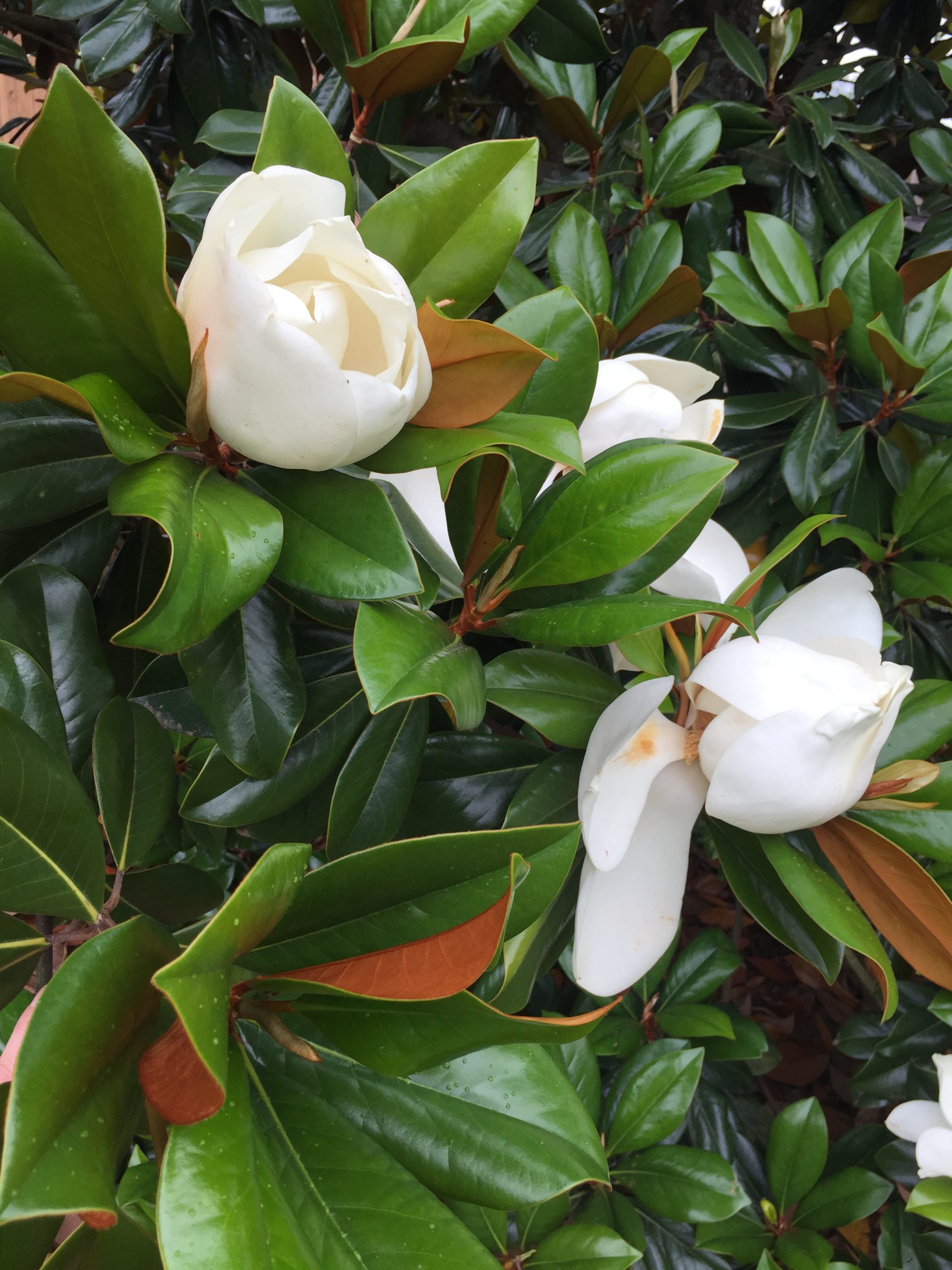
Southern Magnolia
One of the most recognizable trees in the Mid-South and at Lichterman Nature Center is the southern magnolia. The magnolia is both the state tree and flower of Mississippi. Although no species is designated, most people recognize the southern magnolia as the Mississippi state tree. It has lustrous, dark green, evergreen leaves and large, white flowers that bloom in late spring through early summer. Southern magnolias can be seen growing outside the Visitor Center and Backyard Wildlife Center at Lichterman Nature Center.
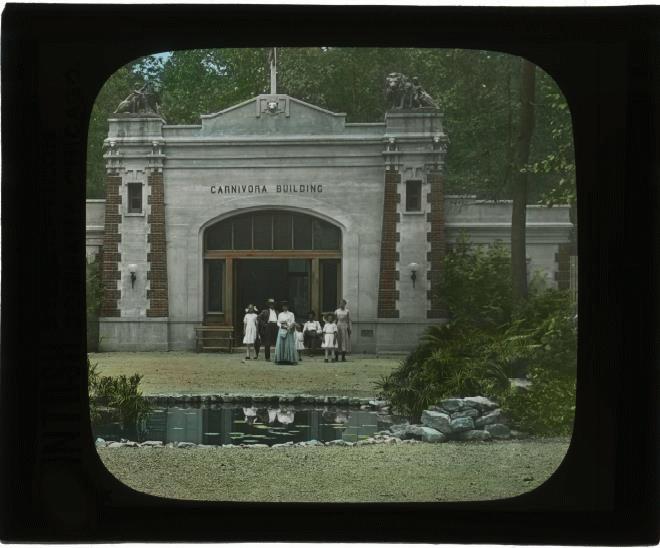
Back in The Day
Did you ever see big cats in the Memphis Zoo’s Carnivora Building? It was constructed in 1909 to house nine big cats. Over the years, many visitors were dismayed to see the big cats kept in indoor cages. In 1993, the zoo opened Cat Country, a 3-acre open air exhibit, and Firecracker became the first Memphis Zoo lion to live with grass beneath its paws. The old Carnivora Building transformed into the Cat House Café, the Zoo’s main restaurant.
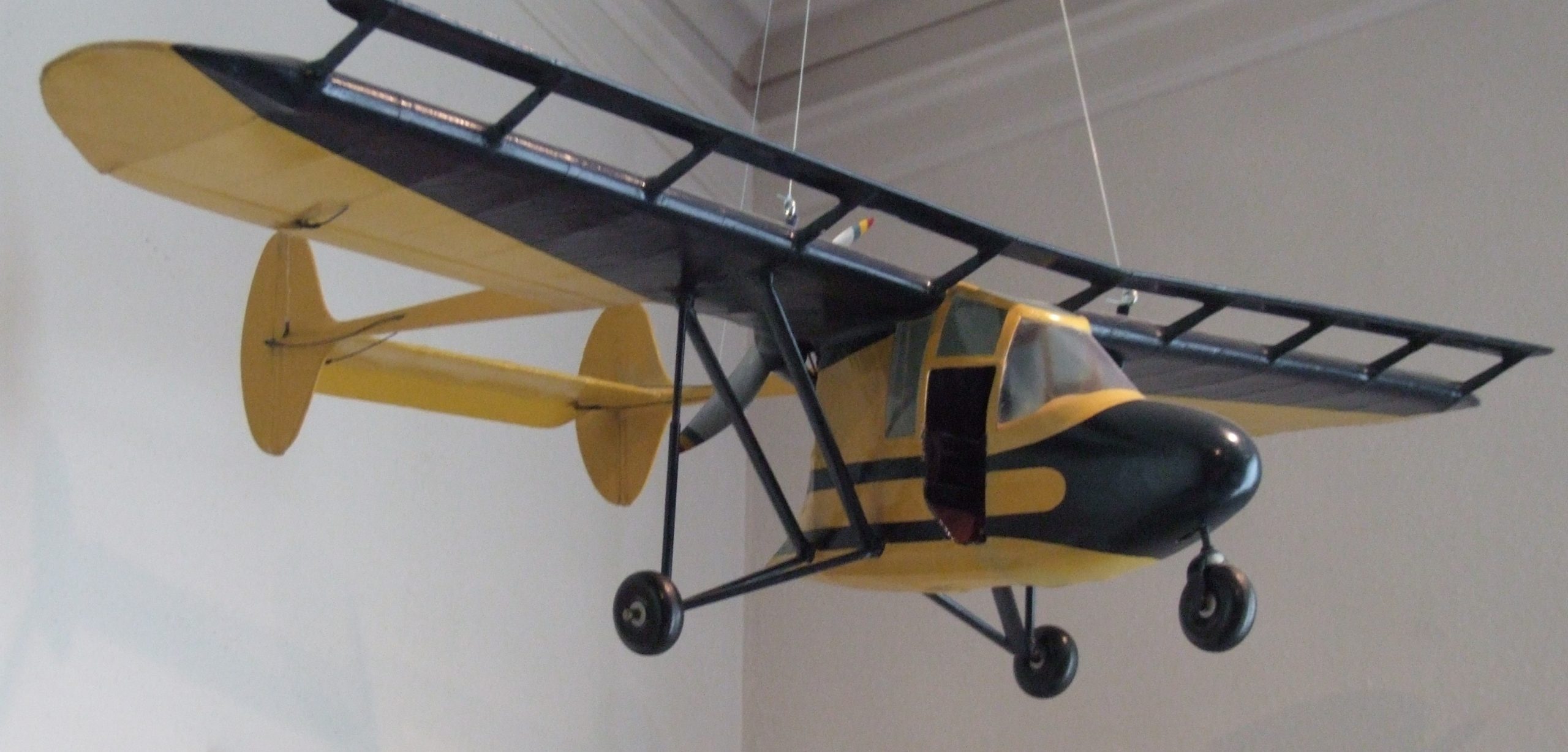
Legendary Wing Walker
Can you imagine walking on the wing of an airplane? Phoebe Fairgrave toured the country doing just that with pilot Vernon Omlie in the 1910s and 20s. Phoebe was also a daring stunt pilot, and set a record for a woman’s parachute jump. In time, she established 66 flying schools and trained pilots for World War II combat. She built the model plane in this picture.
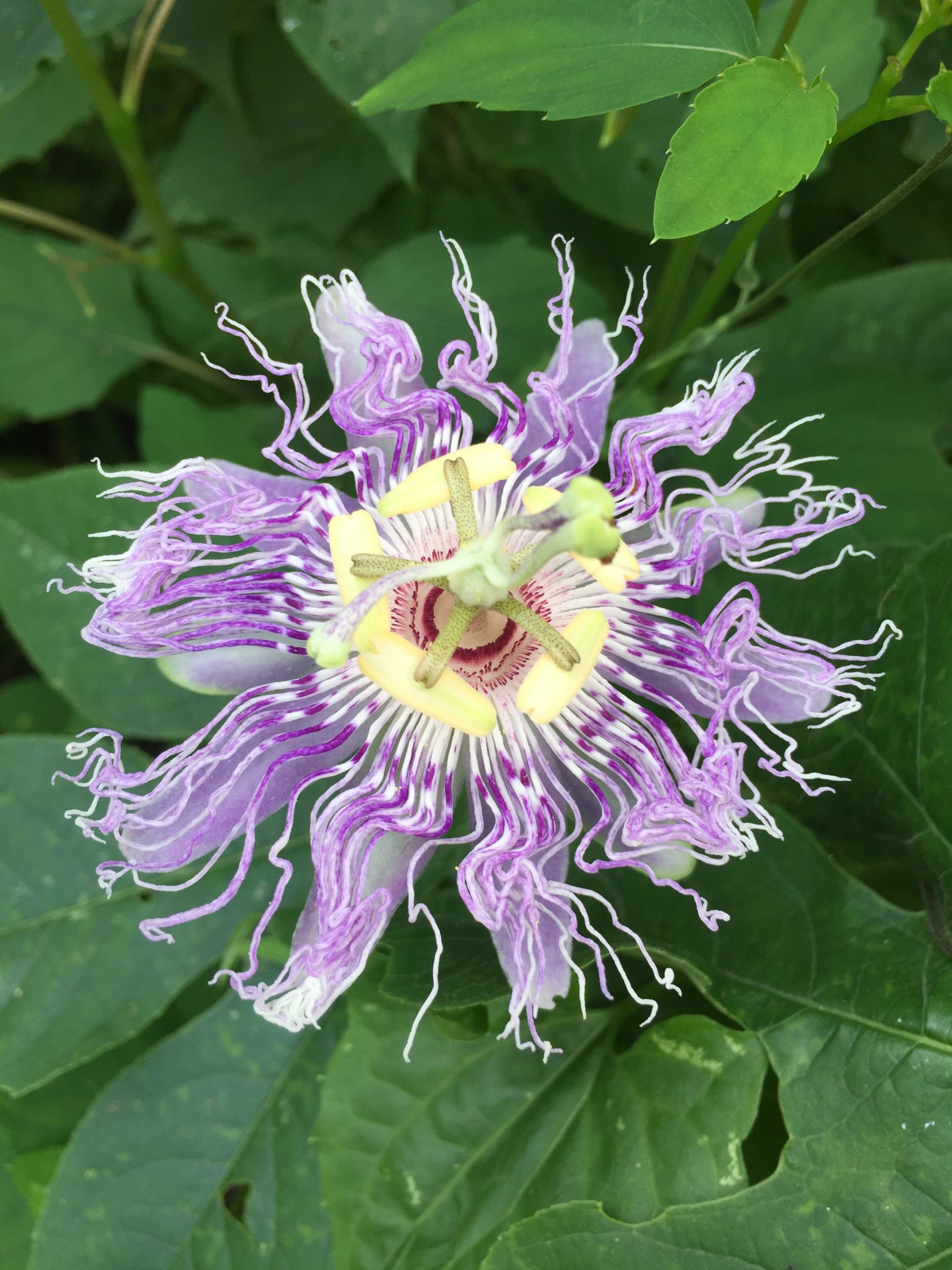
Passion Flower
Did you know Tennessee has two official state wildflowers and an official cultivated flower? The passion flower, pictured here, was the first Tennessee designated state wildflower in 1919. The other state wildflower is the endangered Tennessee coneflower, designated in 2012, and the cultivated flower is the iris, designated in 1933. Passion flowers can be seen growing in numerous places at Lichterman Nature Center, including the Backyard Wildlife Center meadow.
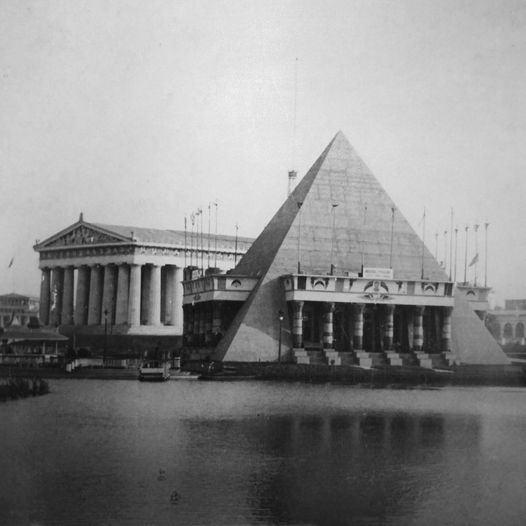
First Pyramid to Represent Memphis
Most Memphians are familiar with Downtown’s steel and glass Pyramid, but did you know that the first pyramid built to represent the city was erected in 1897? Architect James Cook designed a scaled down model of the Pyramid of Cheops to serve as the Memphis/Shelby County exhibition building at the Tennessee Centennial Exposition in Nashville. The building was taken apart after the exposition ended and Memphis was without a pyramid until 1991.
